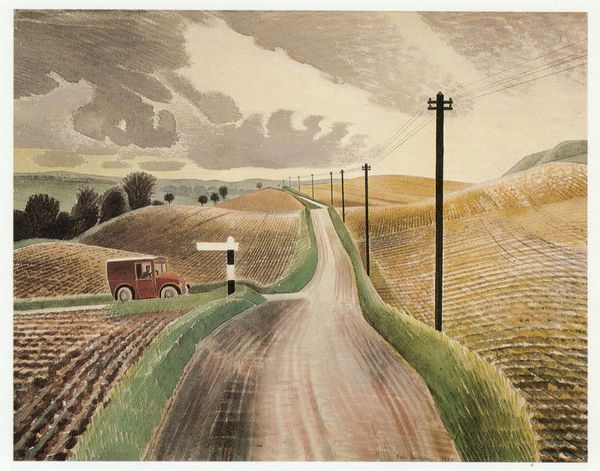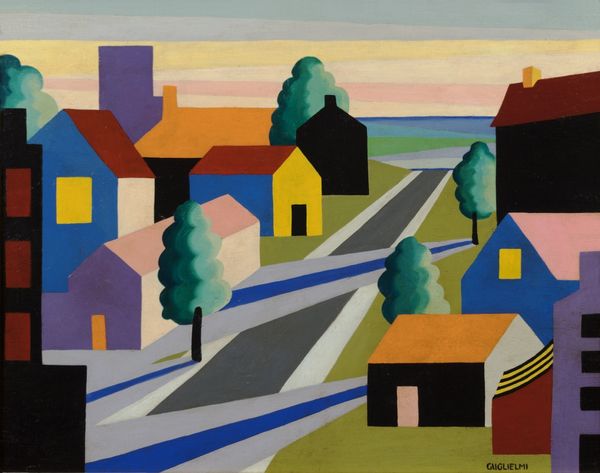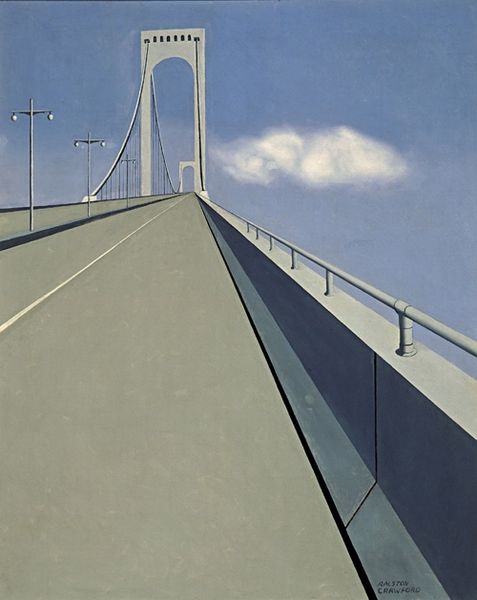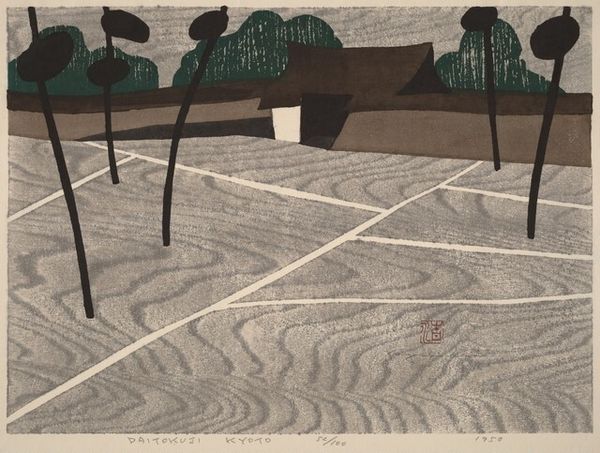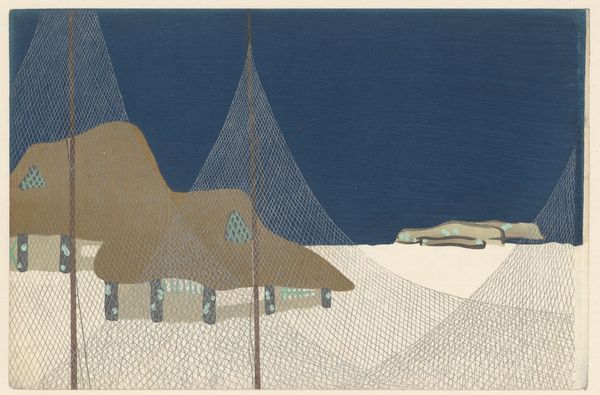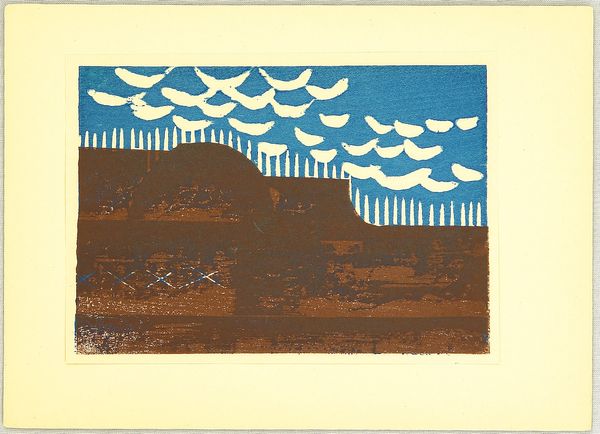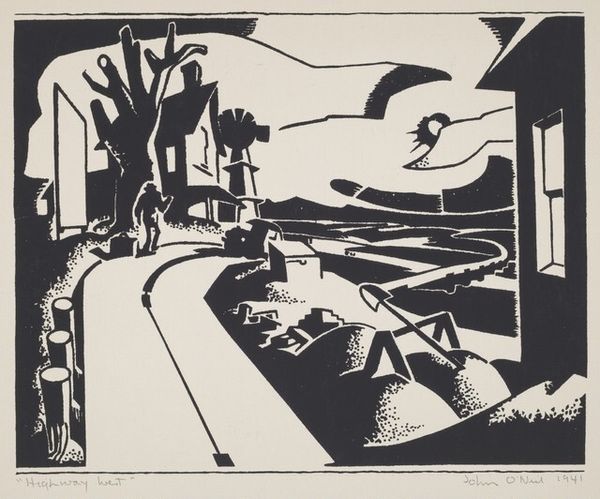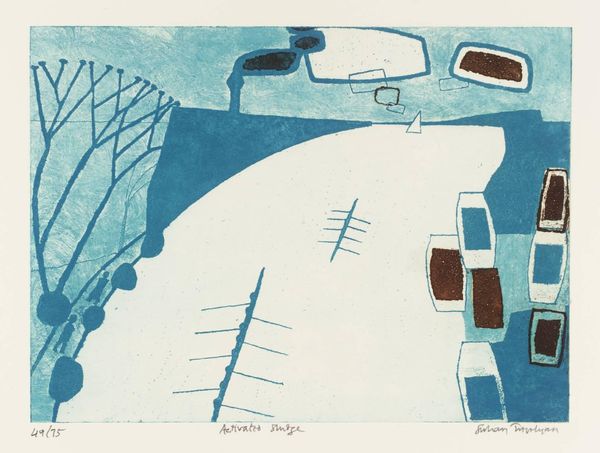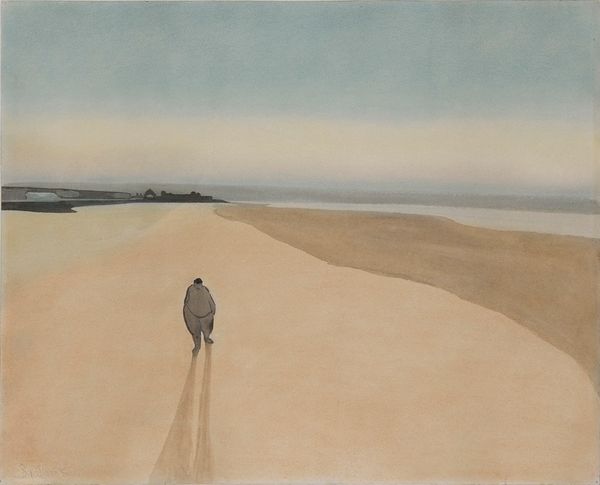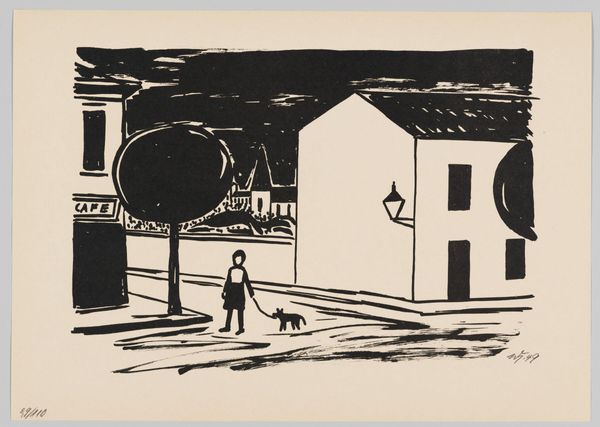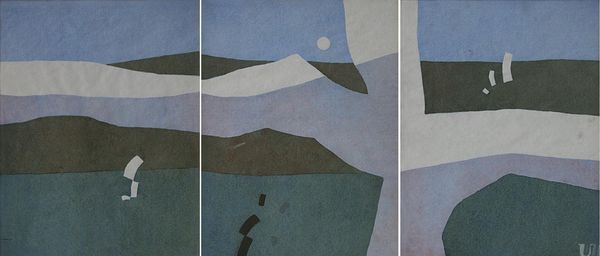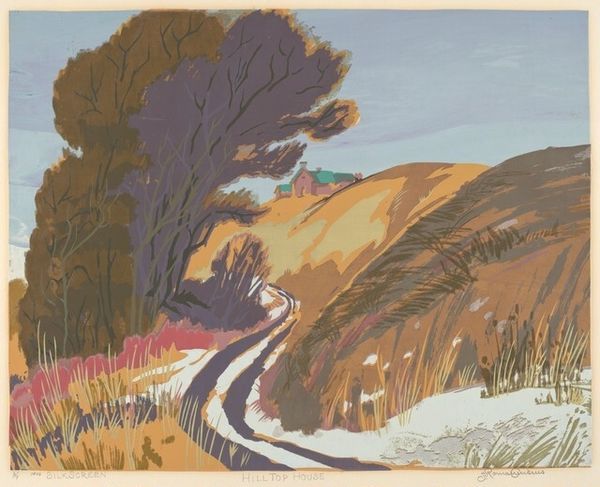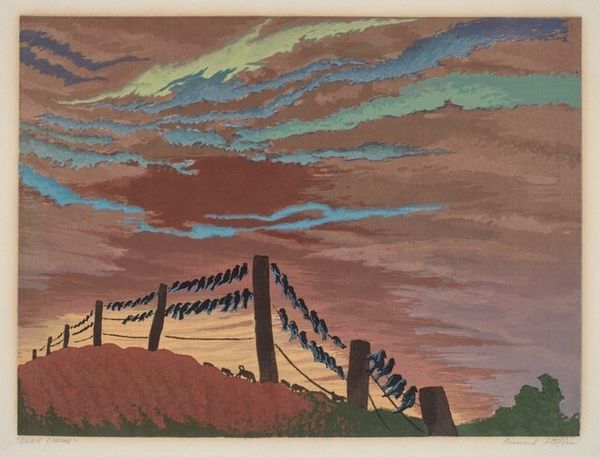
#
precisionism
# print
#
landscape
#
geometric
#
line
#
cityscape
Dimensions: image: 30.48 x 38.1 cm (12 x 15 in.) sheet: 38.1 x 45.72 cm (15 x 18 in.)
Copyright: National Gallery of Art: CC0 1.0
Curator: Ralston Crawford's "Grey Street" from 1940 immediately strikes me with its haunting calmness. The color palette is restricted, yet evokes such a specific mood. What do you make of its aesthetic qualities? Editor: Austere and geometric, certainly. This work intrigues me due to its use of a print medium during the rise of Precisionism. How did Crawford utilize these readily available materials to create, and how accessible did it make his commentary to the average consumer? Curator: Absolutely. Crawford's choice of print suggests a deliberate engagement with mass production. The simplified forms, the repeated motifs of telephone poles, speak to the industrialized landscape and the social changes wrought by modernization. It asks the audience: How are we all impacted by these advancements? Editor: And these advancements also redefine how images are disseminated, of course. We see echoes of urban planning, infrastructure development as extensions of political and economic control in his visual language. Did institutions, galleries of the era amplify the messages within pieces like this one? Curator: Undoubtedly. Spaces dedicated to showing pieces such as “Grey Street” provided the conversation and shaped understanding. These galleries presented not just an aesthetic experience, but an opportunity to critique how we perceive societal progress. It allowed audiences a moment to interpret their individual roles. Editor: It really provokes consideration about labor conditions and mass consumption during this time. Print as a medium challenges this false separation of "high art" versus a tool of capitalist society, in some ways leveling the artistic playing field. Curator: Right. By utilizing these methods, Crawford blurs traditional distinctions within fine art; by looking to industrial elements, Crawford suggests all artistic expression derives meaning through our understanding of production as the core societal driver. Editor: His strategic decision making reveals not only artistic aptitude but also demonstrates profound commentary on socioeconomic themes. Curator: So the process is integral to how it should be interpreted, and its historical location also becomes vital for discussion. Editor: "Grey Street" stands as a reflection on mass manufacturing and visual language, while emphasizing how socioeconomic forces shaped perceptions. It becomes far more poignant. Curator: It is a stark portrayal that encourages viewers to examine these relationships that extend from our historical perspective.
Comments
No comments
Be the first to comment and join the conversation on the ultimate creative platform.
